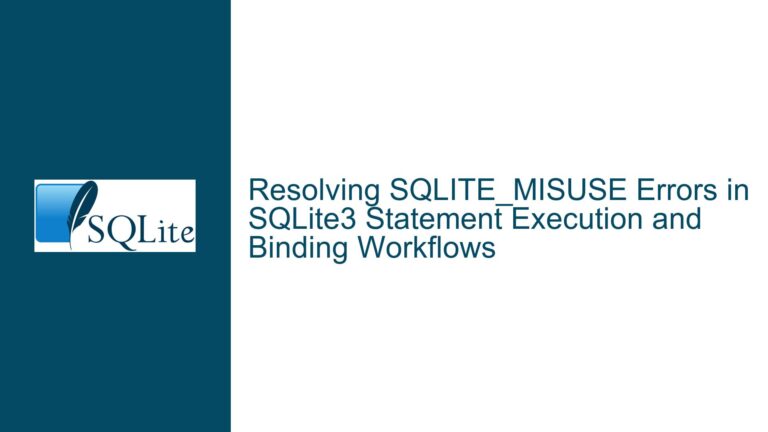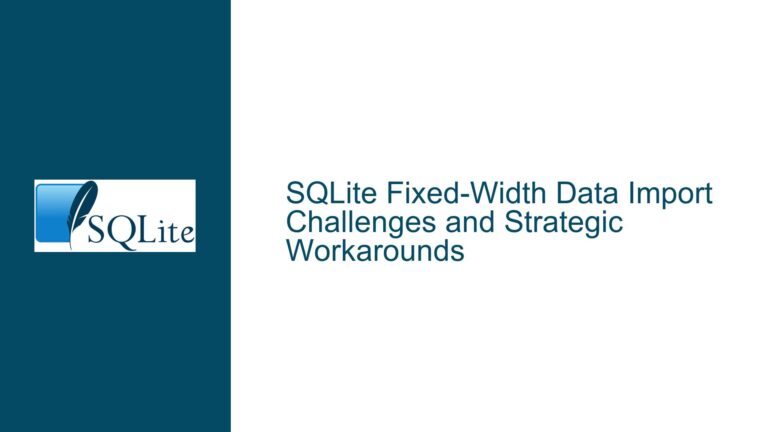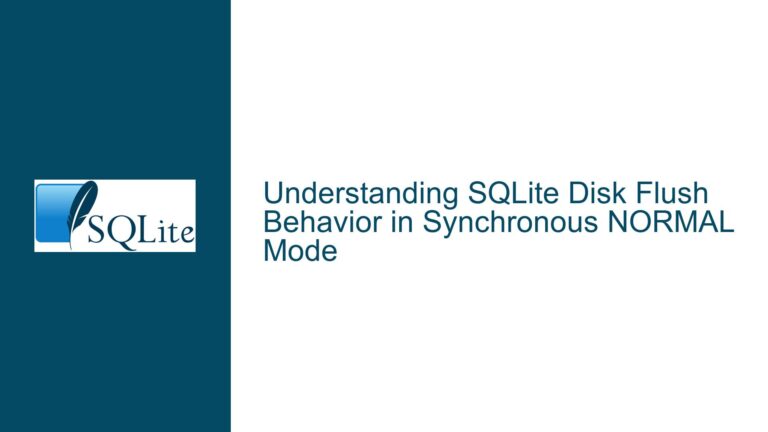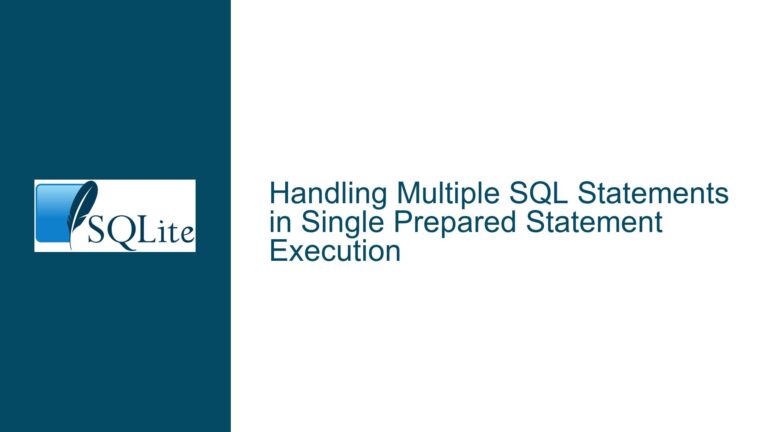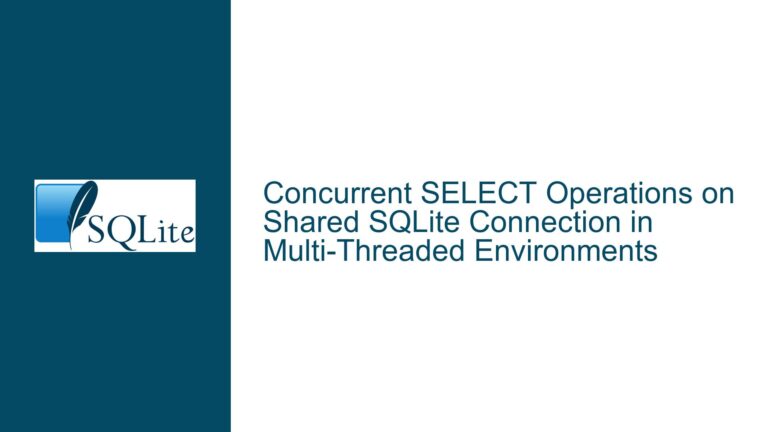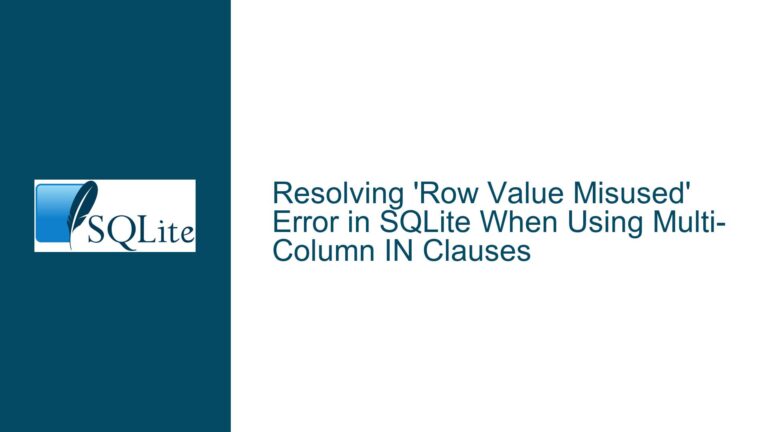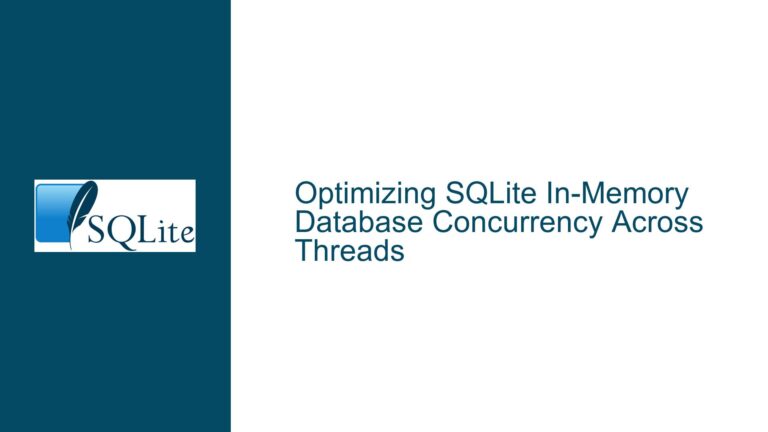Resolving SQLITE_MISUSE Errors in SQLite3 Statement Execution and Binding Workflows
Understanding SQLITE_MISUSE During Prepared Statement Reuse The SQLITE_MISUSE error (return code 21) typically occurs when violating SQLite’s API sequence requirements for prepared statements. This manifests most frequently when developers attempt to rebind parameters to a statement handle that hasn’t been properly reset after previous execution. The core challenge stems from three key API interactions: Execution…
